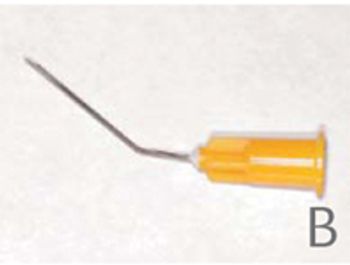
Find out how to perform this technique to treat hard-to-heal corenal ulcers.

Find out how to perform this technique to treat hard-to-heal corenal ulcers.
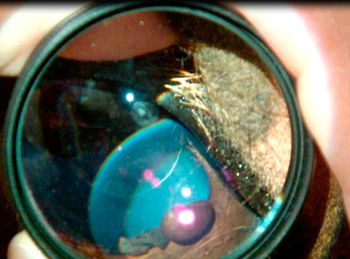
Can you tell what's wrong with this horse's eye?

Good vision is just as important in dogs as it is in people, as exemplified by a study looking at induced myopia in field trial dogs.
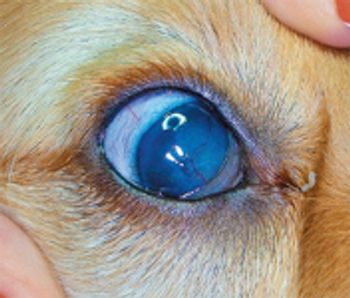
Dr. Juliet Gionfriddo examines a case of a pup with a rough cornea with increased opacity.
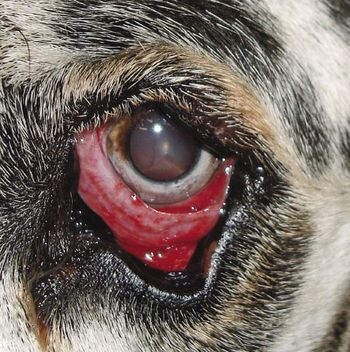
Which location contains the most important lesion in this dog's left eye?
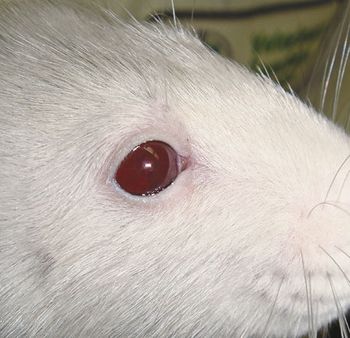
What's behind the tearing and irritation in this rat's eye?

National Report - Veterinarians and medical researchers at the University of Pennsylvania and Cornell University have identified a gene that causes a blindness-inducing disease in dogs.

Dr. Juliet Gionfriddo helps find the cause of Lucky Duck's eye matter.

An enhanced understanding of the anatomy of the eye will help you better evaluate the urgency of complaints regarding eye problems on the phone, facilitate history taking during appointments, and better convey proper treatment and monitoring to your patients owners.

The role of a veterinary technician is key in identifying and diagnosing ocular disease in veterinary patients. Often, this happens before the patient even steps into the hospital, when the owner calls to make an appointment.

Often the eyes are not the cause of the primary ocular signs, they are simply the easiest place to visibly see the effects. Instead of the window to the soul, they can be the window to early diagnosis for your patient if you just know to look for it.

Retinal reattachment surgery has become increasingly important part of the veterinary ophthalmologists tools in managing patients with rhegmatogenous retinal detachments (RRD).

Ophthalmic emergencies require immediate professional attention to maintain vision, health of the globe and relief of ocular pain.

Systemic hypertension is a relatively common disease in older cats and is often related to hyperthyroidism or renal failure.

Veterinary technicians: Help your patients see more clearly-learn your role during ophthalmic exams.
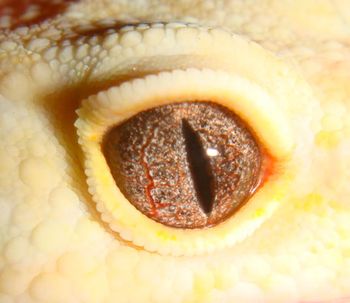
What ocular abnormality is present in this leopard gecko?
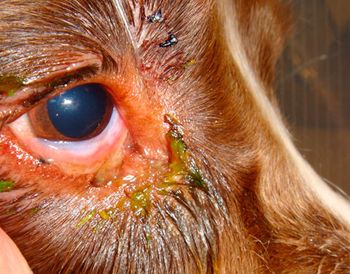
Can you see what procedure was just performed to help treat this dog?

Apocrine sweat gland tumors in the glands of moll. Single or multiple, dark color, benign, resemble human apocrine hidrocystomas.

Perforation, especially if leaking, is a definite emergency if globe is to be saved. Perforation typically has a fibrin plug, blood, iris adhered to cornea, collapsed anterior chamber, aqueous humor leakage

Major refractive structure of the eye due to the large refractive index change at the air / cornea interface

Uveitis classification: any cause of blood-ocular barrier breakdown

Set yourself up for success, Have a quiet dark room, a comfortable exam space, a stool, and an assistant. If presenting for other problems as well, do the eye exam first.Have a systematic plan and stick to it.

Diseases of the uvea


Herpes virus keratitis